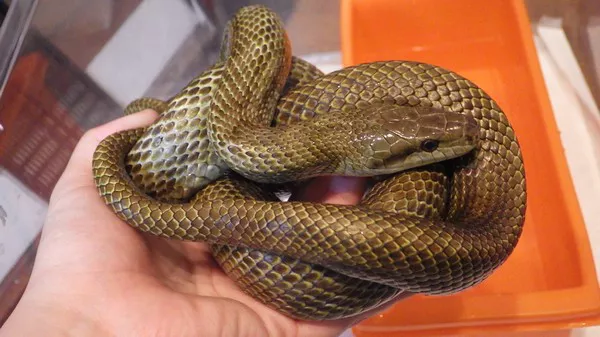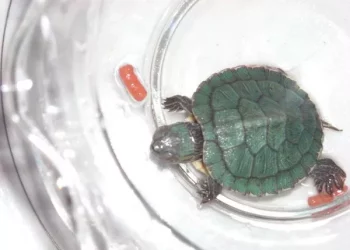Corn snakes, with their vibrant scales and gentle demeanor, have long fascinated reptile enthusiasts and scientists alike. As one of the most popular pet snakes, understanding their emotional and sensory experiences is crucial for their care and well-being. This article delves into whether corn snakes have feelings, exploring their sensory perception, behavioral responses, and the implications for their care.
Understanding Corn Snakes: An Overview
The Basics of Corn Snake Biology
Corn snakes (Pantherophis guttatus) are native to the southeastern United States and are known for their distinctive color patterns and docile nature. These non-venomous constrictors are a popular choice for pet owners due to their manageable size and relatively simple care requirements.
Physical Characteristics: Corn snakes typically have a slender body, reaching lengths of 3 to 5 feet. Their coloration varies, but they often display a mix of orange, red, and brown with distinctive black markings.
Habitat and Behavior: In the wild, corn snakes inhabit a range of environments, from woodlands to grasslands. They are primarily nocturnal and spend much of their time hidden under leaf litter or in burrows.
Sensory Perception in Corn Snakes
The Role of the Senses in Reptiles
Understanding whether corn snakes have feelings requires insight into their sensory capabilities. Unlike mammals, reptiles have different ways of processing and responding to their environment.
Vision: Corn snakes have good vision, particularly for detecting movement and distinguishing between light and dark. Their vision is adapted to low-light conditions, aiding their nocturnal lifestyle.
Smell: Corn snakes use their forked tongues to collect scent particles from the air, which are then processed by the Jacobson’s organ, or vomeronasal organ. This sense is crucial for locating prey and detecting environmental changes.
Heat Sensitivity: Corn snakes, like many reptiles, have specialized heat-sensing pits along their jaws that help them detect the body heat of potential prey. This capability is more refined in some other snake species but still plays a role in their sensory experiences.
Behavioral Responses and Emotions
Observing Behavioral Cues
While corn snakes do not have the same range of emotional expressions as mammals, their behavior can provide clues about their feelings and well-being.
Defensive Behavior: When threatened, corn snakes may exhibit defensive behaviors such as hissing, striking, or coiling. These responses are instinctive rather than emotional but indicate a state of stress or fear.
Feeding Response: A healthy feeding response is an indicator of well-being. Corn snakes will actively hunt and strike at prey, showing excitement and anticipation.
Exploration and Enrichment: Corn snakes that are active and explore their environment are generally considered to be in good health. Lack of activity or interest may suggest stress or discomfort.
Social Interactions and Bonding
Corn snakes are solitary animals, but interactions with their environment and their human caregivers can offer insights into their emotional states.
Handling and Taming: Regular handling can lead to a taming process where the snake becomes more accustomed to human interaction. While corn snakes do not form bonds in the way mammals do, they can become more tolerant and less stressed by handling.
Environmental Enrichment: Providing a stimulating environment with hides, climbing structures, and varied substrates can positively affect a corn snake’s behavior. A well-enriched habitat reduces stress and encourages natural behaviors.
The Science of Reptilian Emotions
Comparing Reptilian and Mammalian Emotions
Emotions in reptiles, including corn snakes, differ significantly from those in mammals. Reptiles have simpler brains and fewer structures associated with emotional processing.
See Also: Do Corn Snakes Have Personalities?
Brain Structure: The reptilian brain lacks the complex limbic system found in mammals, which is responsible for emotions such as fear, pleasure, and affection. Instead, reptiles rely on more basic neural circuits to process stimuli.
Instinctive vs. Emotional Responses: Many of the behaviors observed in corn snakes are instinctive responses to environmental stimuli rather than emotional reactions. For example, a snake’s defensive behavior is a survival mechanism rather than a sign of emotional distress.
Recent Research and Findings
Recent studies in reptile behavior and neuroscience are expanding our understanding of reptilian sensory experiences and responses.
Behavioral Studies: Research has shown that reptiles can exhibit a range of complex behaviors, such as problem-solving and spatial learning. These findings suggest a level of cognitive processing that goes beyond mere reflexive actions.
Emotional Indicators: Some studies have investigated whether reptiles experience basic emotional states. For example, research has explored whether reptiles show signs of distress or pleasure in response to specific stimuli or conditions.
Implications for Corn Snake Care
Creating a Comfortable Environment
Ensuring the well-being of your corn snake involves creating an environment that minimizes stress and supports their natural behaviors.
Habitat Design: Provide a habitat that includes appropriate temperature gradients, humidity levels, and hiding spots. This setup allows the snake to regulate its body temperature and feel secure.
Handling and Interaction: Handle your corn snake gently and infrequently to avoid stress. Avoid sudden movements or excessive handling, which can cause anxiety.
Addressing Health and Well-Being
Regular veterinary check-ups and monitoring your snake’s behavior are essential for maintaining its health and well-being.
Health Monitoring: Pay attention to changes in feeding habits, activity levels, and overall behavior. Any significant changes may indicate health issues that require veterinary attention.
Stress Management: Identify and address potential stressors in the snake’s environment. This may include factors such as inadequate temperature, poor enclosure conditions, or excessive handling.
Conclusion
While corn snakes do not experience emotions in the same way that mammals do, they do have complex sensory and behavioral responses that reflect their well-being and stress levels. Understanding these aspects helps ensure that corn snakes receive the care they need to thrive in captivity. By creating a comfortable environment and observing their behavior, owners can contribute to the overall health and happiness of their corn snakes, ensuring that these fascinating creatures lead fulfilling lives.
Related Topics:


























